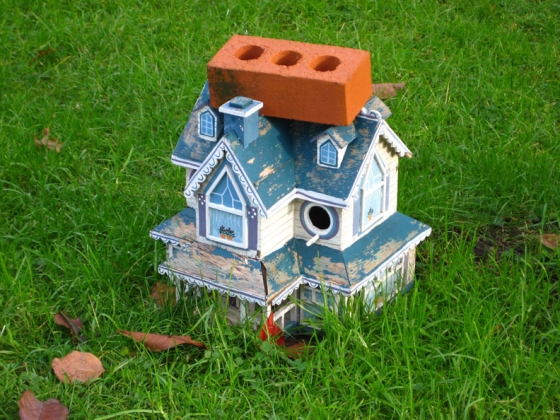In Edinburgh, there is a tourist attraction called the underground city. For around 10 quid, tourists can behold the South Bridge vaults while a low-paid costumed fop festoons you with ghost stories about plague victims and aggrieved cobblers. In reality, the vaults weren’t actually underground — they simply seemed like they were. Disappointingly, the so-called catacombs were simply the lowest levels of nine-story tenements eventually paved over to build the capital’s Royal Exchange. The “underground” label comes from the fact that the sun never hit the lower reaches of the slum, which housed the city’s poor and destitute.
Here in Canada, the term usually refers to a spate of interconnected shopping malls built out of necessity due to either frigid temperatures or the need to maximize commercial real estate, depending on who you ask. Here in Vancouver, with our temperate winters and crapulous housing market, we’ve developed a much different kind of underground city: a depressing epidemic of basement apartments.
Edinburgh was the last city I lived in before Vancouver, so you’ll have to forgive me for the vulgar and entitled move of comparing the living conditions of the 19th-century Scottish poor to that of the Lower Mainland’s lower-middle classes. But if you’re in the income bracket forced to find rental accommodation in order to stay within three bridges of the Seawall, you’ll be navigating insidious euphemisms like “garden suite,” “surprisingly sunny ground-level” and “lower Vancouver Special.”
This dismal state of affairs is the consequence of the cockamamie stereotype that is Vancouver’s real estate market. I like to say that talking about buying a house in the lower mainland is like talking about eating in space: both enjoy equal access to reality. Yet those who still dream about popping ramen in orbit show the increasingly normalized gall of charging cartoonishly inflated rents for shitty basement flats in order to support their 50-year mortgage.
I don’t mean to suggest that the living conditions of the average basement suite in Vancouver is akin to the much more urgent situation facing the city’s low-income residents, who face a much more urgent housing crisis. However, the typical basement denizen — students, service industry workers, artists and other factions of the precariat — is nonetheless vulnerable to exploitation. What’s more, since basement apartments have become common practice for would-be homeowners contending with ludicrous home prices, many of these tenants have inexperienced, first-time landlords who look upon their tenants as burdensome aggravations standing in the way of a deserved revenue stream, rather than people looking for a stable place to live. And who would blame them with advice like this from landlords’ rights groups?
While rent and real estate prices get all the press, it’s important to look at how the practice of tenancy in Vancouver distributes renters in its topography and its architecture too. With the co-operative model stalled when federal and provincial support dried up in the 1990s, if you can’t afford to own property, you’ll find your options limited to damp, mouldy and dark corners of the city. As low-income residents find themselves pushed further and further eastward, those in the next income bracket up find themselves pushed further and further down.
One of the most sinister characteristics of Vancouver’s housing psychosis is the way it pits lower-middle class tenants against low-income ones. We saw this with Reliance Properties’ “micro-lofts” on Hastings. Leaving aside the damaging capitalist fantasy that people have the right live wherever they please, the target market for these 250-square foot flats is the same people trying to escape Vancouver’s underground city. Since these micro-lofts are part of the vanguard in the ongoing gentrification of the Downtown Eastside, would-be tenants see their chief opponents in the current residents of the neighbourhood, the city’s most vulnerable — and never the developers or politicians responsible for municipal policy.
It seems timely, then, that our friends from The Mainlander, the Kootenay School of Writing and the Vancouver Renters Union are conducting a Rent Assembly for Vancouver tenants in May 2013. The Rent Assembly asks for proposals interrogating the concept of rent as such and how to foster tenant solidarity across income brackets in a city so hostile to the 55 per cent of its citizens who cannot afford to own. The rent is definitely too damn high, but the whole cultural practice of rent in Vancouver ensures that tenants are an underclass both economically and literally. The organization and collective action proposed by the Rent Assembly offers a chance to bust out of the subterranean foundation which supports not only the brick and mortar houses above it, but the whole parasitic and sociopathic real estate market of the lower mainland.




